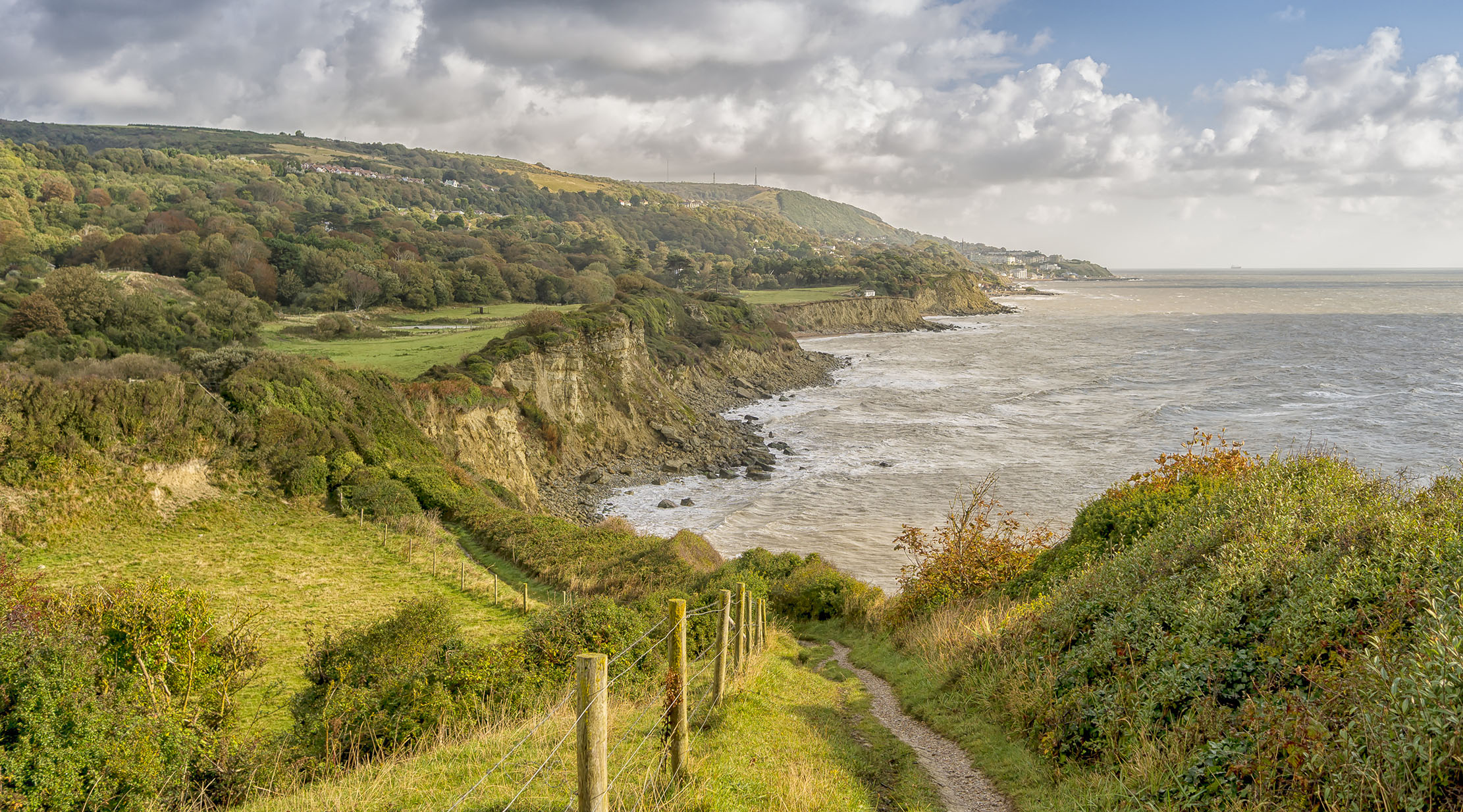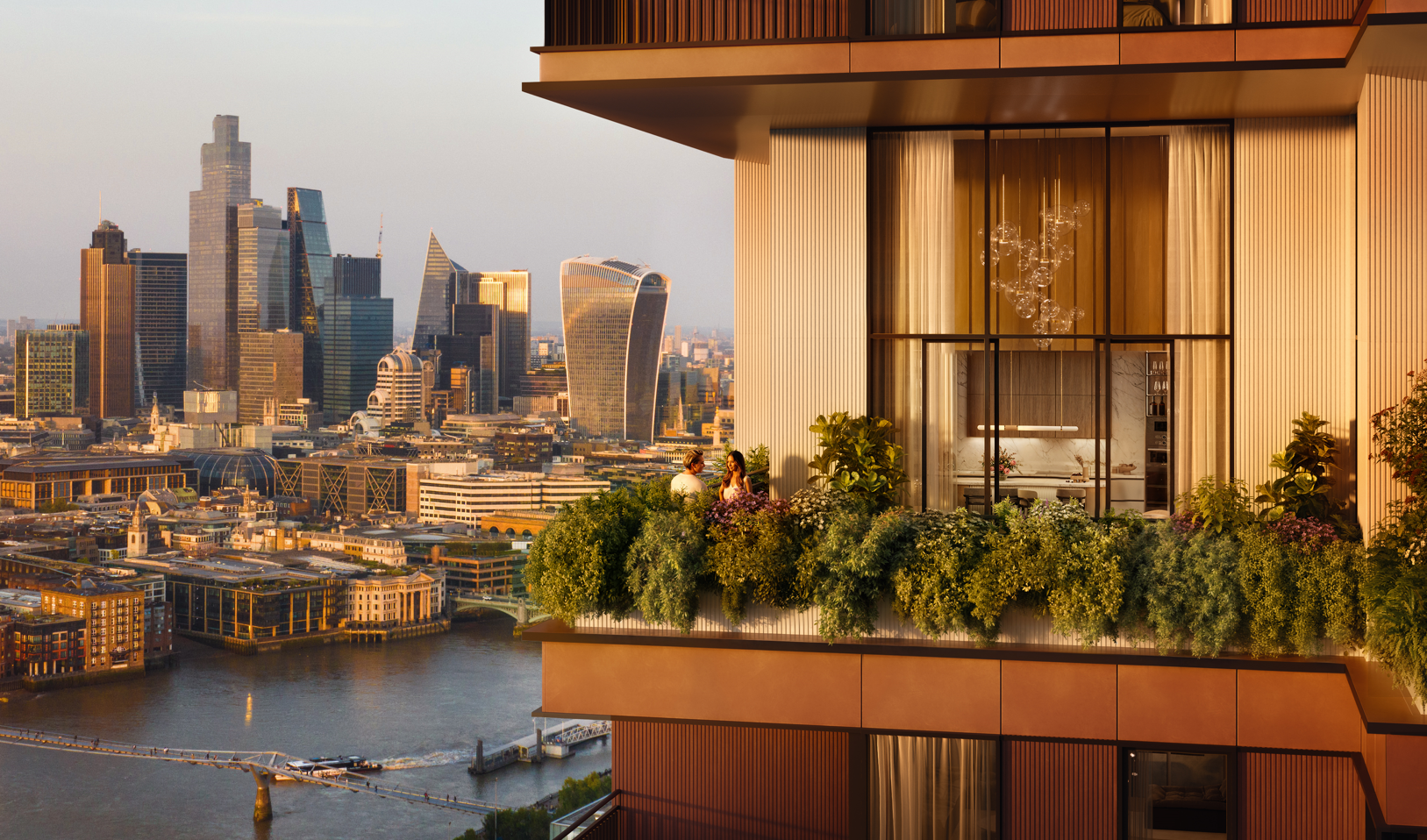The eccentric corner of the country that's the only part of the UK successfully invaded in World War II — and how it's become a sought-after place to live
Charlie Baker visits one of the Isle of Wight’s oldest villages and finds a quiet enclave of eccentricity — as well as some remarkable homes up for sale.


On Binnel Bay, a mile-long stretch of deserted beach on the southern tip of the Isle of Wight, just below the village of St Lawrence, you’ll find an unlikely monument to a German chemist. William Spindler inherited a fortune from his father and, having come to the island for health reasons, decided to develop St Lawrence as a rival resort to Ventnor, the seaside town that was then at the height of its popularity.
What Spindler possessed in wealth, he lacked in diplomacy. He printed pamphlets, which he distributed, accusing the islanders, among others things, of laziness. He planted more than a million trees and developed a seawall in Binnel Bay that has since collapsed in the clay, leaving stacks of stones in the coves that are known locally as Spindler’s Follies.
You can see why Spindler was drawn to St Lawrence: it’s England at its freshest, most verdant. It’s also England at its wildest. Eccentrics have been attracted to it for hundreds of years. The 18th century’s most famous cuckold, Sir Richard Worsley, retreated to his Marine Villa overlooking the scudding Atlantic Ocean after his estrangement from his wife.

Today, the collapse of the A3055 on the Undercliff Drive to Niton has brought a different band of hermits: on either side of the road, the properties are tended by people living off grid, tending vegetables in plots underneath the cliff, raising pigs, keeping their driveway chained up with flashing Keep Out signs.
Even at Mirables, one of the oldest estates in the area, where a 17th-century house still stands facing the sea, you can see the hulk of an old car in the gardens, its shell mingling with ferns and ivy.

You don’t feel as if you’re in southern Britain here. The Undercliff gives a semi-tropical climate, with the temperature the warmest in the country, and vast fragmented rocks dotted around the landscape. There is a palpable sense of danger, too: roads are closed, and not reopened for years. Pathways are blocked. People keep to themselves.
For many years, St Lawrence was a smuggling hotspot; indeed, smuggling was the backbone of the Isle of Wight’s economy until the Victorians ‘discovered’ it and created a tourism boom that lasted for almost a century. But the isolation of St Lawrence still speaks to the criminal mind. In 2002, at Orchard Bay, 150 customs officers arrested five individuals who had shipped £90 million worth of cocaine from the Caribbean.
Sign up for the Country Life Newsletter
Exquisite houses, the beauty of Nature, and how to get the most from your life, straight to your inbox.
Invaders from the sea have been a constant: it is contended by local historians that on August 15, 1943, a Nazi raiding party from occupied Alderney landed at RAF St Lawrence to capture the latest radar equipment. It is said that they succeeded and that they also took a number of soldiers as prisoners. As this was the only occasion this happened on UK soil in the Second World War, it is claimed it was all hushed up by Winston Churchill, who was understandably embarrassed by the whole affair.
Today, RAF St Lawrence has been transformed into a spectacular Modernist home called The Bunker, recently on the market at £2.25 million via The Modern House.

Up in the main village, things are more staid, with the black-painted hydrants donated by Spindler occasionally visible on the quiet roads, where bulky Victorian villas with names such as Spring Cottage are set back from the road behind thick walls.
In the heart of the village lie two churches, both well maintained on my visit. The older church is reputed to be the smallest in the country and is certainly one of the oldest in the island, dating to the 12th century, and has a beautiful garden maintained by the local community abutting the graveyard.
Might this be the place where we finally escape eccentricity in St Lawrence? Even this tiny parish church is tinged with weird England: on the roll of vicars by the door, you will see the Revd Corbert Shelberry, who was fishing for crab in Binnel Bay when a passer-by reminded him that it was the Sabbath. Hurrying into the church, he cracked his skull on the low north door and died on the spot. Shelberry, who was vicar from 1734–54, is now, fittingly, buried in a tomb in the church where he died.

Credit: Strutt and Parker
Best country houses for sale this week
An irresistible West Country cottage and a magnificent Cumbrian country house make our pick of the finest country houses for
Country Life is unlike any other magazine: the only glossy weekly on the newsstand and the only magazine that has been guest-edited by HRH The King not once, but twice. It is a celebration of modern rural life and all its diverse joys and pleasures — that was first published in Queen Victoria's Diamond Jubilee year. Our eclectic mixture of witty and informative content — from the most up-to-date property news and commentary and a coveted glimpse inside some of the UK's best houses and gardens, to gardening, the arts and interior design, written by experts in their field — still cannot be found in print or online, anywhere else.
-
 'Monolithic, multi-layered and quite, quite magnificent. This was love at first bite': Tom Parker Bowles on his lifelong love affair with lasagne
'Monolithic, multi-layered and quite, quite magnificent. This was love at first bite': Tom Parker Bowles on his lifelong love affair with lasagneAn upwardly mobile spaghetti Bolognese, lasagne al forno, with oozing béchamel and layered meaty magnificence, is a bona fide comfort classic, declares Tom Parker Bowles.
By Tom Parker Bowles Published
-
 Country houses, cream teas and Baywatch: Country Life Quiz of the Day, April 24, 2025
Country houses, cream teas and Baywatch: Country Life Quiz of the Day, April 24, 2025Thursday's Quiz of the Day asks exactly how popular Baywatch became.
By Toby Keel Published
-
 A day walking up and down the UK's most expensive street
A day walking up and down the UK's most expensive streetWinnington Road in Hampstead has an average house price of £11.9 million. But what's it really like? Lotte Brundle went to find out.
By Lotte Brundle Last updated
-
 Damon Hill's former home in Marbella is the perfect place to slow down
Damon Hill's former home in Marbella is the perfect place to slow downThe glorious Andalusian-style villa is found within the Lomas de Marbella Club and just a short walk from the beach.
By James Fisher Published
-
 A 327-acre estate in the heart of 'England’s Côte d’Or', with a 26,000sq ft Georgian style home at its heart
A 327-acre estate in the heart of 'England’s Côte d’Or', with a 26,000sq ft Georgian style home at its heartStokes Hall in the Crouch Valley is an inspiring property looking for a new owner.
By Penny Churchill Published
-
 Schreiber House, 'the most significant London townhouse of the second half of the 20th century', is up for sale
Schreiber House, 'the most significant London townhouse of the second half of the 20th century', is up for saleThe five-bedroom Modernist masterpiece sits on the edge of Hampstead Heath.
By Lotte Brundle Published
-
 Is the 'race for space' officially over?
Is the 'race for space' officially over?During the lockdowns, many thought the countryside was the place to be. It seems many are now changing their minds.
By Annabel Dixon Last updated
-
 What's a 'wellness village' and will it tempt you back into the office?
What's a 'wellness village' and will it tempt you back into the office?The team behind London's first mixed-use ‘wellness village’ says it has the magic formula for tempting workers back into offices.
By Annunciata Elwes Published
-
 A mini estate in Kent that's so lovely it once featured in Simon Schama's 'History of Britain'
A mini estate in Kent that's so lovely it once featured in Simon Schama's 'History of Britain'The Paper Mill estate is a picture-postcard in the Garden of England.
By Penny Churchill Published
-
 Hidden excellence in a £7.5 million north London home
Hidden excellence in a £7.5 million north London homeBehind the traditional façades of Provost Road, you will find something very special.
By James Fisher Published
